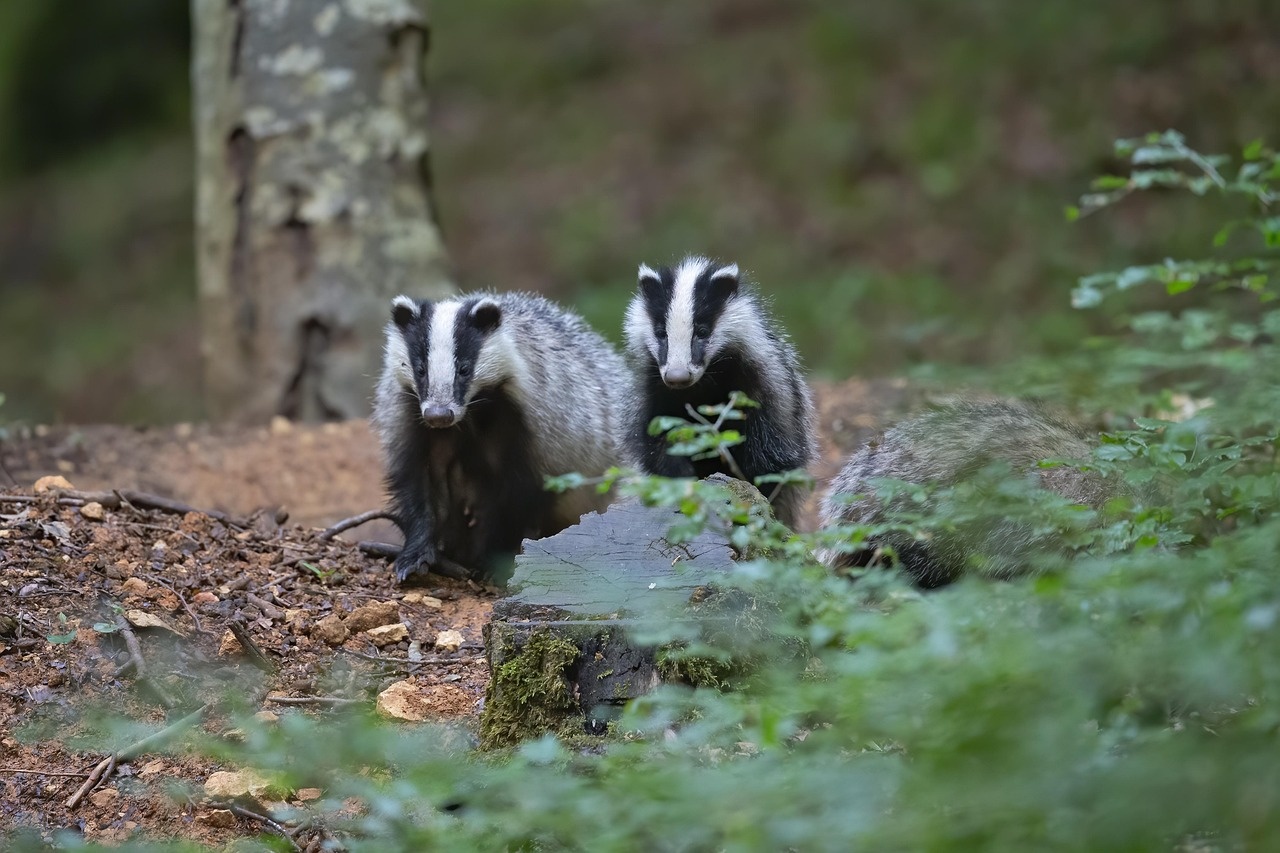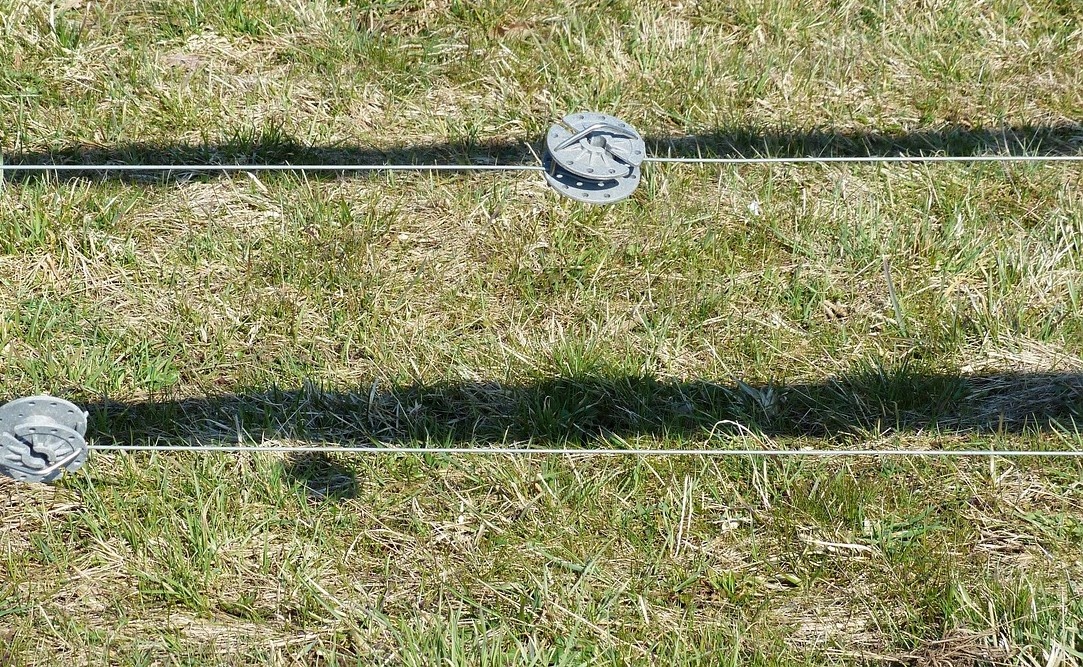Guide to Keep Badgers Out
|
Electric fencing for badgers
|


Badgers are notoriously hard to keep out of garden and fields. They are curious animals that will make use of opportunity that is available to them. Badgers are nocturnal mammals that live in social groups within elaborate underground burrows known as setts. These setts are usually found on banks, woodland edges, or hedgerows, and the animals tend to forage within a few kilometres of home. They follow regular paths between their setts and feeding areas, which means they often return to the same gardens or fields night after night. They climb and dig well, making it extra hard to discourage them from entering your garden.
Recognising signs of badger Activity
If you suspect badgers are visiting, look for clues such as conical holes in the ground, flattened paths through vegetation, or small pits containing droppings known as latrines. Claw marks on soft ground or fences and overturned turf can also confirm their presence. Recognising these early can help you act before damage becomes severe.
Reducing attractions and food sources
Most badger visits are driven by food availability. In domestic gardens, they may dig up lawns looking for insects, raid compost heaps, or help themselves to fallen fruit. On farms, they can damage crops, particularly sweetcorn or soft fruit, or disturb soil while foraging. Because badgers are strong diggers and persistent creatures, deterring them requires thoughtful planning rather than force.
Legal and ethical considerations
Because badgers are strictly protected in the UK, it is illegal to harm them or interfere with their setts. For most situations, the goal should be to deter badgers humanely and guide them to move elsewhere rather than to exclude them entirely from the landscape. Creating wildlife corridors or leaving undisturbed areas away from crops and gardens can encourage them to settle and feed elsewhere, maintaining a balance between conservation and protection of property.
Humane electric badger fencing
But luckily, there are several ways to discourage badgers, though it often takes some trial and error to find what works best for your situation. A secure fence is essential, and ideally, it should be electrified to prevent badgers from climbing over. Place a layer of heavy woodchips or gravel along the base to make digging more difficult. If you want to stop them from digging altogether, bury chicken wire securely into the ground beneath the fence line.
The best type of electrified fence is a three-wire system. The lowest wire should be very close to the ground, no higher than 20 cm, with no more than 20 cm between each wire. Our best practice is:
We usually recommend the use of high-tensile steel wire for permanent installations, especially around farms or large areas. It’s easy to keep this wire tight and prevent sagging. For temporary or moveable setups, use high-quality polywire or tape, ensuring it has multiple metal conductors woven in. Visibility can help badgers learn to avoid the fence rather than testing it constantly.
Electric netting can be used, but for badgers you must ensure:
- The netting is high-voltage and strong enough
- There is a buried barrier or low live wire to stop digging
- You are not interfering with setts
- Your energiser is suitable for netting, otherwise a standard triple-wire fence may be more effective.
Choosing an energiser
In regards to the energiser most suited for deterring badgers. Shock strength is what really teaches badgers to stay away. Badgers are well-furred and muscular, which means you need a strong pulse to penetrate. Aim for a minimum of 4–5 kilovolts (kV) on the live wires. Under 3 kV is often ineffective for badgers, especially in wet conditions or with older wires. Many of our energisers can deliver 5–8 kV, which is ideal.
You don’t need a massive one, but you do need consistent voltage and enough joules of stored energy to maintain it, even when vegetation touches the wire.
- For small gardens or short runs (under 200 m): a 0.5–1 joule energiser is fine.
- For longer fences (up to 1–2 km): choose at least 2–3 joules.
- For field-scale or multiple-strand setups: 3–5 joules or more ensures stable power.
Both mains-powered and battery/solar-powered units work but mains units are more reliable and require less maintenance if you have access to power. Solar units are good for remote areas, provided the battery and panel are sized properly.
Make sure the insulators are not positioned in a way that the badgers can use them as footholds to climb. Space them widely apart and avoid placing them directly above one another; instead, stagger their positions.
To help badgers learn to avoid the fence, wrap a small amount of peanut butter or another attractive food in aluminium foil and attach it to the wires. When a badger sniffs or touches the foil with its sensitive nose, it will receive a mild shock, quickly teaching it to stay away.
Additional tips
Additionally we would like to recommend some other harmless but potential deterrents, in combination with an electric fence. Badgers dislike surprises, and there are three effective ways to make use of this:
- Motion-activated water sprinklers: The sudden burst of water will startle them and can be a humane way to keep them from returning. Keep in mind that this may also deter other animals, including pets.
- Uncomfortable surfaces: Badgers dislike walking on uneven, spiky, or rocky ground. You can spread sharp sand, pinecones, or horticultural grit along their access routes to make the area less inviting.
- Lastly, badgers have a strong sense of smell, and scents such as citronella or garlic spray may help to discourage them. However, these should always be used alongside other deterrents, as they are rarely effective on their own.
Coexistence and prevention
Living alongside badgers is part of rural and even suburban life in much of the UK. With a combination of sturdy fencing, good waste management, and an understanding of their habits, it is possible to protect gardens and fields while respecting the animals’ place in the ecosystem. Preventing badger damage is not about removing them altogether but about making human spaces less inviting and encouraging them to forage in more natural habitats.